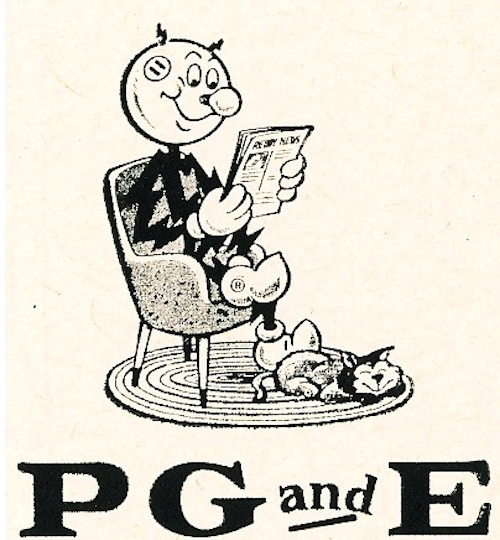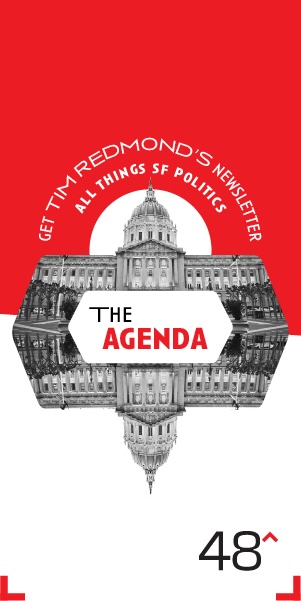It’s astonishing how badly PG&E has bungled its political position in San Francisco.
Twenty years ago, even ten years ago, it was hard to find anyone in the Mayor’s Office or on the SF Public Utilities Commission who wanted to talk seriously about creating a public-power system.

Today, the mayor, the city attorney, and a senior official from the SFPUC are pushing to buy PG&E’s local distribution system. They are asking the state PUC to establish a price for the lines and poles and meters, so that the city can make a reasonable bid.
But the latest Chronicle story on the situation leaves out all of the key history of the city’s more than 100-year failure to live up to the requirements of federal law–and the tools San Francisco can use to make local public power a reality.
PG&E used to be one of the most powerful political forces in San Francisco. The company poured prolific campaign contributions (and sometimes, direct legal fees) to the likes of Dianne Feinstein, John Burton, and Willie Brown. Just about every big law firm in the city got part of PG&E’s largess. So did lots of nonprofits and charities. The company had the full support of the Chronicle and the SF Examiner. PG&E lobbyists had free run of City Hall
All of this, of course, was funded by the ratepayers.
And all of this also happened in violation of an Act of Congress.
The story is long; You can read some of it here. That segment ends in 1997, but it shows some of the power PG&E wielded in local government.
Help us save local journalism!
Every tax-deductible donation helps us grow to cover the issues that mean the most to our community. Become a 48 Hills Hero and support the only daily progressive news source in the Bay Area.
In essence, San Francisco at the beginning of the 20th Century needed a stable water supply, but many rights on many of the rivers in Northern California had already been claimed. The last possible spot with the potential for a city dam and reservoir was on the Tuolumne River, in Hetch Hetchy Valley—in Yosemite National Park.
Building a dam in a national park was pretty much unthinkable for the newly emerging Conservationist Movement, and John Muir formed the Sierra Club in part to oppose the idea.
But another important movement was also emerging as the nation’s industrial power shifted from coal and steam to electricity. The Public Power Movement argued that electricity should never be controlled by private companies, that it was a service (like public water) and not a commodity to be sold for profit.
Rep. John Edward Raker, whose district included Yosemite, sought a compromise: San Francisco could build a dam for water – but would also have to use it to generate hydroelectric power, which would be controlled entirely by the city. The hearings on the bill make clear that its supporters saw it as a way to establish a public-power beachhead in Northern California – and to directly undermine the growing Pacific Gas and Electric Company’s ability to create a private monopoly on electricity sales.
The Raker Act of 1913 passed, the dam got built, the water got here – but PG&E found (often crooked) ways to continue controlling residential and commercial electrical service in the city.
The Hetch Hetchy dam system now generates 1.6 billion kilowatt hours of electricity, and combined with renewable energy purchased for CleanPowerSF, San Francisco now provides power to about 70 percent of the city.
So there’s not much reason left for PG&E to operate in town—except that it owns all the poles and wires that you need to deliver power to customers at the retail level.
Over and over since the 1920s, activists have tried to pass ballot measures to take over PG&E’s system; over and over, PG&E spent all the money it needed to defeat them.
For much of the 20th Century, the local news media either ignored the issue or sided with PG&E. When the Bay Guardian broke the story of the Raker Act Scandal in 1969, after a UC Berkeley biochemistry professor named Joe Neilands walked into the young paper’s tiny office to offer Publisher Bruce Brugmann information that nobody else would publish, the general response from the local dailies was—at best—dismissive.
For decades, as I took this story over, the Chron and the Examiner would either ignore everything I wrote or make fun of it. So would most of the elected officials in the city.
Here’s how bad it got: In November, 2001, a ballot measure by then-Sup. Tom Ammiano that would have created a municipal power agency appeared to be passing on Election Night.
Then all of a sudden Mayor Willie Brown’s election director announced that she was afraid there might be anthrax in the ballot boxes. So she stopped the count and moved the boxes out of City Hall to an unsecure storage location.
No anthrax was ever found. When the final tally came in some days later, public power had lost by 533 votes.
The Coast Guard and numerous residents later found parts of ballot boxes floating in the Bay.
There was no official investigation. The mayor, the district attorney, the city attorney, the daily newspapers—everyone acted as if nothing unusual had happened.
So what changed? How has the city reached a point where even the established organizations and leaders (London Breed is the first mayor since Art Agnos to come out in support of public power) are lined up against PG&E?
District Elections in 2000 shifted the balance of power profoundly. PG&E could no longer guarantee the election of a friendly board with the money that it took to run citywide campaigns.
Then there was San Bruno. And bankruptcy. And the fires, which were caused in part by PG&E shifting money from fire-prevention to executive salaries and profits.
Still: PG&E apparently decided that it had beaten off public power so many times that it could continue to control SF politics. The company has, over the past few years, tried to impose ridiculous fees any time a city agency, or city project (including affordable-housing projects) tried to hook up to the PG&E grid.
There’s a long list of the problems here. Just a few examples:
It took PG&E two years to reconnect the Randall Museum to the grid after a renovation project. Cost to the city: $1 million. (Cost to the kids who missed two years of fun and excellent summer camps at the museum: Way, way more.)
PG&E is still refusing to connect an affordable housing complex in Potrero Hill to the grid. The company is continuing to delay the opening of the Southeast Community Center in Bayview.
In many cases, the company demands hundreds of thousands of dollars worth of new—and unnecessary—equipment.
Then the company decided to make it harder for the city to keep running street lights, demanding new equipment that could cost the city $1 billion.
All of this is part of the continuing effort to keep San Francisco from using its own public hydropower to power city projects—and to keep the private company in control of last-mile power delivery so it can keep earning monopoly profits in a city where by law it shouldn’t be doing business in the first place.
For decades, PG&E and its allies have complained that buying the system would cost “billions”—as if San Francisco residents and businesses or ratepayers would be on the hook.
But that’s not how it works—and the “billions” number is wildly misleading.
Thanks to Sup. Aaron Peskin, who got a ballot measure passed a few years ago giving the SFPUC the ability to issue revenue bonds for clean-power projects (and taking over PG&E’s grid would count), the money would come entirely from Wall Street.
That is: The SFPUC would issue bonds—at a very low rate since municipal bonds are tax-exempt and borrowing money right now is really cheap—and the bonds would be paid off with the profits the city would make selling power.
Since revenue bonds are not backed by the full faith and credit of the city (that is, by our property taxes), there is zero risk to a single taxpayer or to the General Fund.
I have done this math many, many times: San Francisco could pay far more than the system is currently worth (PG&E’s entire market cap right now is $17 billion and San Francisco is five percent of the system, so even $3 billion would be high), cut electric rates by around 10 percent, pay the interest on the bonds, and still wind up with extra revenue at the end of the year.
Selling retail electricity when you already have a fully paid off renewable large hydro project is incredibly lucrative. And the city—unlike PG&E—would be serious about climate change and renewable power. PG&E will never support distributed solar—no money to be made there. The city could use its revenue to pay for solar panels on houses, medium-sized solar generating facilities, and other ways to make power without carbon emissions.
And here’s what the city, and the Chron, haven’t said so far: If PG&E won’t sell, the city has every legal right to seize the system by eminent domain. A court would decide the price—but a CPUC determination would count for a lot in that battle.
The other option: the city could simply revoke PG&E’s franchise to use city right-of-way to sell power, issue revenue bonds and build out our own modern, state-of-the-art distribution system.
Both options would take a few years—but the Raker Act passed in 1913, so the length of this massive scandal is now measured in time that lasts more than a century.
I ran into a former PG&E lobbyist not long ago, and after we’d talked about another project he was working on, the conversation, of course, drifted to the Bay Guardian and PG&E.
This lobbyist knew very well how his former employer operated; he told me he was very happy that he left.
“At some point,” he said, “we all need to have big party and say ‘The Bay Guardian was right.’”
And a long, long list of politicians and newspaper reporters and editors were wrong, and created this mess that we are now trying to get out of.
I’ll buy the first round.




